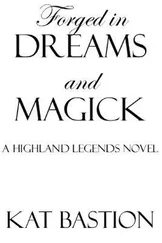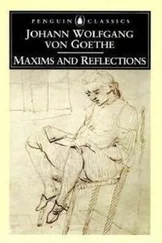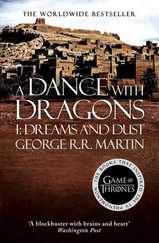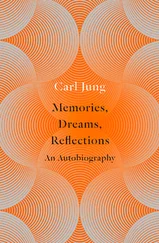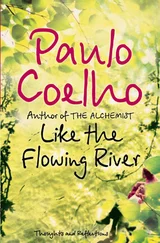Looking back, it wasn’t such a bad idea to go to the country like Paul and Linda and not see anybody after the sixties. It was rather a wise thing to do because there was this dark cloud looming. It’s like that song of Roger Waters that I sing in my show:
Do you remember me?
How we used to be Helpless and happy and blind?
Sunk without hope In a haze of good dope and cheap wine?
Laying on the living-room floor
On those Indian tapestry cushions you made
Thinking of calling our firstborn Jasmine or Jade.
And then that ominous chorus:
Don’t do it
Don’t do it
Don’t do it to me!
Don’t think about it!
Don’t think about it!
Don’t think about what it might be
Don’t get up to open the door,
Just stay with me here on the floor
It’s gonna get cold in the nineteen seventies.
And that was written in 1968 ! That was prescient, if not your actual prophetic vision. Whatever we thought of Linda, and she didn’t make that great an impression on me, I think it was a credit to Paul that he didn’t marry a model. A module. Because that’s what all the others have ended up doing, they’ve married these modules. And they have children who also become modules.
I heard a track from Paul McCartney’s album Ram the other day on the radio. And with an almighty whoosh it just took me right back to those times I spent living on the streets, and then I found myself thinking about dear old Mike Leander who had been my producer on the early albums. Mike talked me into making that record that was released in 2002, called Rich Kid Blues . Hysterical! In fact it was never finished, and I never really liked it because it was made during my heroin addiction. This was 1972, and I was very, very sick indeed. But listening to this album now, all these years later, I think it’s really rather lovely, even though my voice is very weak. What the record represents is a very important moment in my life, when I, as a junkie, was shooting up on the streets, and then suddenly this really nice man, Mike Leander, comes and finds me hanging out on some corner and makes a record with me. He somehow managed to scam some money and took me into a really cheap studio somewhere in Soho with just a guitar player. Mike played me some songs and then asked what I was listening to. I was really into Cat Stevens’s haunting Tea for the Tillerman album, which every woman in the world seemed to love back then.
I remember that Mike played me Paul McCartney’s Ram and I thought it was just brilliant. He said, ‘Let’s try and do something like this record.’ And then he gave me some money to get me off the street. I actually remember leaving the studio that day with a copy of Ram tucked under my arm and all this cash to get some digs. That very day I managed to find a little flat and I set up home listening to Macca’s wonderful record. Even now Ram brings a tear to my eye whenever I put it on. Rich Kid Blues is a sweet, folksy collection that is very redolent of the period – you know, James Taylor, Melanie and Janis Ian, that short-lived era of singer songwriters. I hoped it might fly, but then suddenly Glam Rock came along – which, as irony would have it, Mike was instrumental in because he was Gary Glitter’s producer – and my poor little record was consigned for nearly thirty years to the dustbin of oblivion deep in the vaults at Gem Records. Now it seems that the record is regarded as Marianne Faithfull’s ‘lost album’, and I guess in many ways that’s right, because this album is the missing link between my early work and Broken English .
Sometime late in 2000 I received the proofs of a book through the post called Turn Off Your Mind, Relax, and Float Downstream by a member of Blondie. It’s about the ‘mystic sixties’, and it really does capture the light and the dark side of the decade. And there was a lot of dark, creepy stuff in the sixties, I can tell you: The Process, Kenneth Anger, Mel Lyman, Manson, Anton LaVey, and L. Ron Hubbard. Those people were always trying to get hold of me. Somehow I managed to negotiate my way around them quite successfully. I didn’t get involved in any cults, apart from going up to Bangor for that regrettable weekend with the Maharishi and the Beatles, the weekend that Brian Epstein killed himself.
It’s so odd that few of my friends see a nything negative about the sixties. Most of them from back in the day say, ‘Oh but, Marianne, I don’t remember the sixties like that at all … it was wonderful !’ When I hear things like that I question myself, wondering if I got it all wrong and am mad. But I think I have been completely sane all along. Back in the sixties I certainly did seem to attract the most dreadful people: fringe types, cranks, weirdos, people who were after power. It was all so creepy …
This reminds me about the time at the tail-end of the sixties when dear Henrietta Moraes – about whom much more anon – wrote an investigative article for the Daily Telegraph colour supplement about L. Ron Hubbard, the founder of the Scientology religion. She infiltrated meetings in order to write her piece, which went into great detail about what she saw as the dark rotten core of what Hubbard did. She wrote all this stuff about how his partner, Mary Sue Whipp, was a homunculus with three breasts, and how he planned world domination through the power of the spirit. Hen was sure he was all about mind domination, and about muscling in on you immediately and filling your head with all this nonsense, isolating you from family and friends and brainwashing you. So of course he was furious when the Telegraph published Hen’s article. She became convinced that people were following her around and waiting outside her house, and got so terrified that she eventually went to the police.
I wanted to leave the sixties in a blaze of glory – under a volcano. That would be the Vesuvio, Spanish Tony’s Million Dollar Bash, almost emblematic of the blithe, hedonistic sixties overweening-ambitions-and- carpe - diem approach to life. Spanish Tony was the dealer to Swinging London’s stars and the jeunesse dorée .
All of London’s rock aristocracy were in attendance the evening Spanish Tony, nefarious drug dealer to the stars, finally opened his nightclub (which had, actually, only one night). Like all dealers, he didn’t consider himself just a dealer, he wanted to be something else, something a bit more grand, a ma?tre d’ to the hipoisie. Thus, the Vesuvio. It was pretty much of a dive, but the people there were just stupendous: le tout Londres hip . All the Beatles, most of the Stones, a few Whos, spangled guitar slingers, mangled drummers were there – in short, everybody who was anybody, or thought they were. The punch had, of course, been spiked with LSD. And in strolls Paul – very casually, very cool, almost whistling, you know, with one of those little smiles on his lips as if he’s got a really big secret. John was already there and seemed to have had quite a bit of punch by the time we arrived. George, too, of course, and Pattie Boyd, the quintessence of Pop chic. So there’s our Paulie, looking rather pleased with himself. He was in fact very cool, a real man-about-town and interested in different things than George. Curious Paul, fascinated with all sorts of strange things – he really was like that. And what swinging scene would be complete without Robert Fraser, Groovy Bob – the title of Harriet Vyner’s biography, a bricolage portrait of the archetypal boulevardier of swinging London. The Robert Fraser Gallery was the place to be. He showed the classic Pop artists of the sixties – Richard Hamilton, Jim Dine, and Andy Warhol – and made avant-garde art hip to the rock princelings. He was beautiful, took a lot of drugs, and could always be found where the new thing was happening. ‘More than any other figure I can think of, Robert Fraser personifies the Sixties as I remember them,’ so blurbed Lord McCartney on the back of the Vyner bio. Robert even tried to turn Paul on to heroin, but Paul didn’t care for the experience – that was lucky!
Читать дальше


